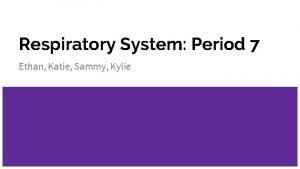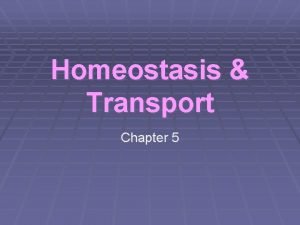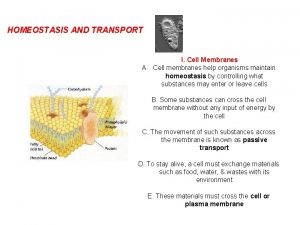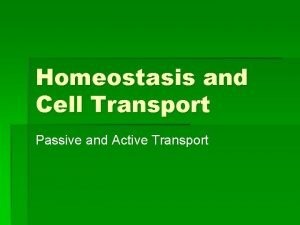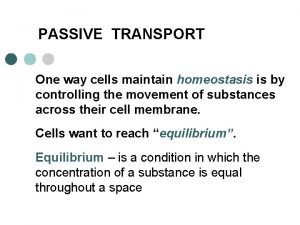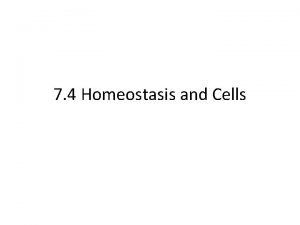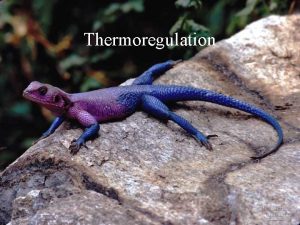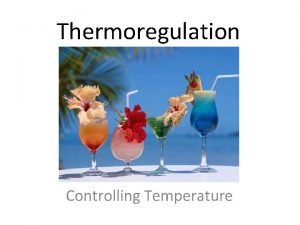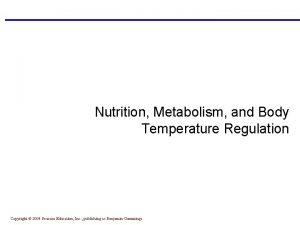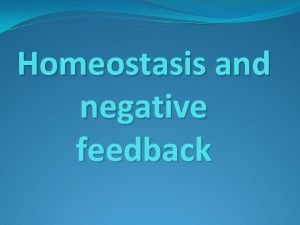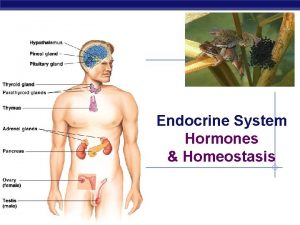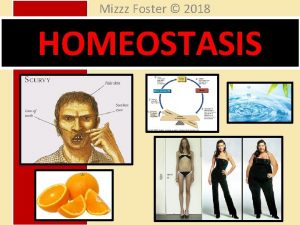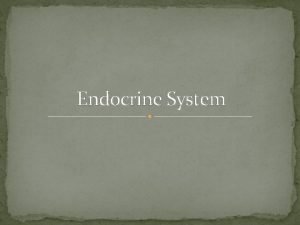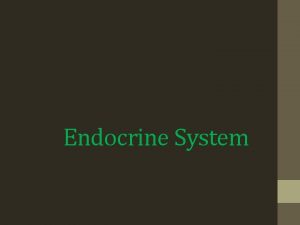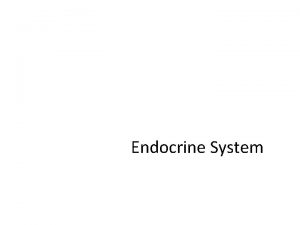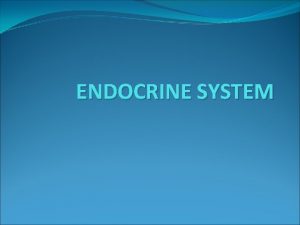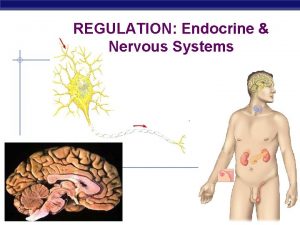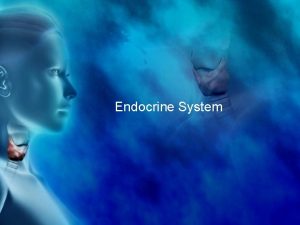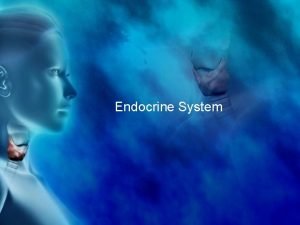Endocrine System Regulation How we maintain homeostasis u












- Slides: 12

Endocrine System Regulation - How we maintain homeostasis u nervous system nerve signals control body functions electrical (+/- charges) AND chemical (neurotransmitters) u endocrine system hormones (proteins) chemical signals ONLY control body functions Regents Biology 2009 -2010

Homeostasis u maintaining internal balance in the bodyorganism must keep internal conditions stable even if environment changes also called “dynamic equilibrium” use feedback mechanisms u example: body temperature – 37 C – monitored by nervous system humans: w too cold = shiver – (muscles contact – R – produce heat) w too warm = sweat Regents Biology

Hormones chemical messages from one body part to cells in other parts of body u travel through bloodstream u hormones are proteins u communication needed to coordinate whole body u maintaining homeostasis u hormones work SLOWER than nerve impulses u Regents Biology

Endocrine System Endocrine system releases hormones u glands which secrete (release) chemical signals into blood chemicals cause changes in other parts of body w growth hormone (HGH) w sex hormones w response hormones w metabolism hormones w and more…. Regents Biology

Getting the correct signal hormone fits receptor on “target” cell receptor hormone target tissue/cell secreting cell (gland) Regents Biology can’t read signal nontarget cells can’t read signal

Review Protein Synthesis • • Start with DNA (gene) in the nucleus Transfer info to RNA – DNA can’t leave the nucleus RNA moves to ribosome – amino acid chain is made Moves to ER – packaged into a vessicle Then to Golgi – repackaged in to another vessicle Vessicle moves to cell membrane Secretion by exocytosis (active transport) Regents Biology

Regents Biology

Pituitary u u Parathyroid hormone – regulates Calcium metabolism Adrenal u thyroxine – regulates metabolism Parathyroid u Glands Thyroid u many hormones: master gland HGH – human growth hormone TSH – thyroid stimulating hormone FSH – follicle stimulating hormone; LH – leutinizing hormone adrenaline – “fight or “flight” Pancreas Insulin – lowers blood sugar u Glucagon – raises blood sugar Ovary - estrogen, progesterone Testes - testosterone u Regents Biology

Negative Feedback Response to changed body condition u if body is high or low from normal level u signal tells body to make changes that will bring body back to normal level once body is back to normal level, signal is turned off gland Like thermostat in your house Regents Biology hormone 1 lowers body condition high specific body condition

Feedback Maintaining homeostasis hormone 1 lowers body condition gland high specific body condition low raises body condition Regents Biology gland hormone 2

Regulation of Blood Sugar insulin pancreas After a meal high liver stores sugar as glycogen body cells take up glucose from blood liver blood sugar level (90 mg/100 ml) low triggers hunger Regents Biology liver releases glucose liver Between meals pancreas glucagon reduces appetite

Feedback: Maintaining Homeostasis Balancing glucose levels in blood depress appetite pancreas insulin cells take up glucose from blood liver takes up glucose for storage liver releases glucose to blood Regents Biology glucagon pancreas stimulate hunger
 Respiratory system maintain homeostasis
Respiratory system maintain homeostasis How do cells maintain homeostasis
How do cells maintain homeostasis How do cells maintain homeostasis
How do cells maintain homeostasis What is homeostasis
What is homeostasis Prosmosis
Prosmosis What do unicellular organisms do to maintain homeostasis
What do unicellular organisms do to maintain homeostasis Bioflix activity homeostasis low blood glucose
Bioflix activity homeostasis low blood glucose Bioflix activity homeostasis hormones and homeostasis
Bioflix activity homeostasis hormones and homeostasis What animals are cold blooded
What animals are cold blooded Thermoreceptor
Thermoreceptor Temperature regulation
Temperature regulation Negative feedback mechanism
Negative feedback mechanism Endocrine system and reproductive system
Endocrine system and reproductive system
